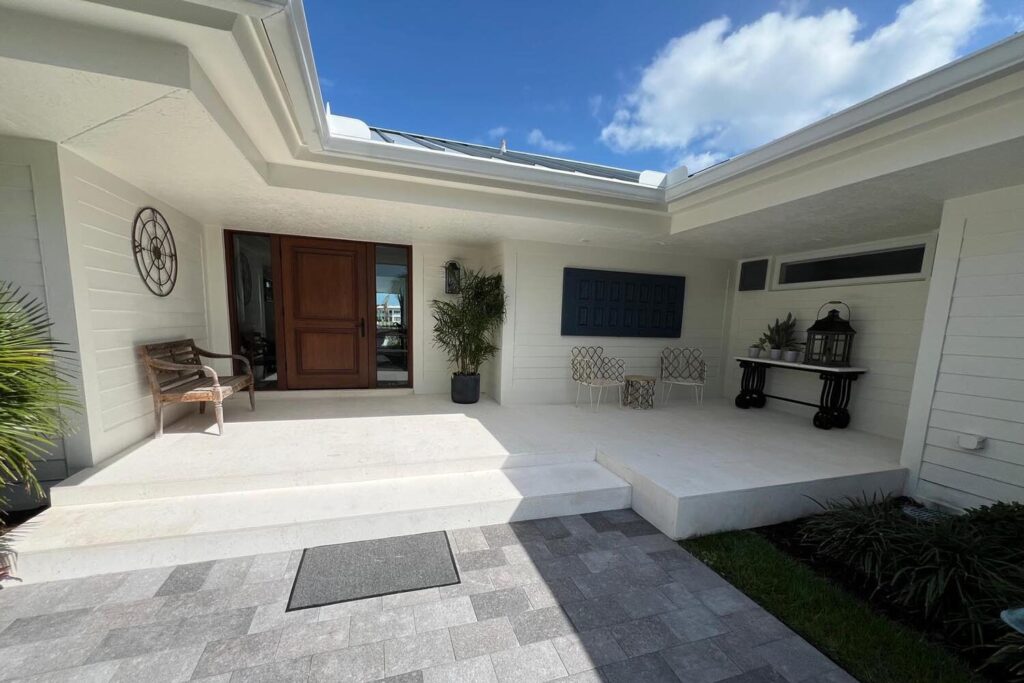Marble Installation: Installing marble is an art that combines aesthetics, precision, and durability. Whether you’re renovating your home, office, or commercial property, marble brings elegance and timelessness. However, achieving a professional and enduring result requires meticulous preparation, accurate execution, and careful finishing touches. This guide covers all aspects of marble installation to ensure stunning results.
Choosing the Right Marble
Before installation, selecting the appropriate marble type is crucial. Marble comes in various types, including Carrara, Calacatta, Emperador, and Crema Marfil, each with distinct colors, veining patterns, and durability. Consider the space’s usage, style preferences, and budget. Calacatta, for instance, provides luxury, whereas Carrara is elegant yet budget-friendly.

Preparing the Surface
Surface preparation ensures the durability and stability of marble tiles or slabs:
- Substrate Inspection: Verify that the subfloor or wall is clean, level, and free of cracks or debris.
- Leveling and Repair: Uneven surfaces must be leveled with self-leveling compounds or patching materials.
- Waterproofing and Moisture Barrier: Apply moisture barriers in wet areas like bathrooms and kitchens to protect against moisture damage.
Measuring and Cutting Marble
Accurate measurements and precise cutting prevent costly mistakes:
- Measuring Area: Precisely measure the installation area and calculate extra tiles to account for cutting errors or future repairs.
- Cutting Tools: Use professional-grade wet saws with diamond blades for clean, precise cuts.
- Layout Planning: Dry-fit tiles before applying adhesive to visualize patterns and make necessary adjustments.
Choosing Adhesives and Mortars
Selecting the correct adhesive is essential for marble installation:
- Thinset Mortar: Ideal for floors and walls due to its strong bonding properties.
- Epoxy Adhesive: Recommended for high-traffic or heavy-use areas due to its durability and water resistance.
- Application Technique: Spread adhesive evenly using a notched trowel, applying consistent pressure.

Setting Marble Tiles
Correct tile placement ensures an attractive finish and durable bond:
- Initial Placement: Start from the center or most visible point of the room, laying tiles outward.
- Tile Spacers: Use spacers to maintain even grout lines and symmetry.
- Leveling System: Employ tile leveling systems to achieve uniform tile height and prevent lippage.
Grouting
Grouting enhances stability and appearance:
- Selecting Grout: Choose unsanded grout for narrow joints (less than 1/8 inch) and sanded grout for wider joints.
- Applying Grout: Spread grout diagonally using a rubber float, pressing firmly into gaps.
- Cleaning Excess Grout: Immediately remove excess grout using damp sponges to avoid hazing on marble surfaces.
Sealing Marble
Marble is porous and requires sealing to protect from stains and moisture:
- Sealer Types: Choose penetrating sealers for effective moisture prevention without altering appearance.
- Application: Apply sealer evenly using a brush or roller, ensuring complete coverage.
- Curing and Reapplication: Allow sufficient curing time as recommended by the manufacturer and plan for regular resealing, typically every 1-2 years.
Polishing and Finishing
Proper finishing enhances marble’s natural beauty:
- Surface Polishing: Use diamond polishing pads progressively (from coarse to fine grit) to achieve a high-gloss finish.
- Buffing: Final buffing with specialized marble polish enhances shine and removes minor imperfections.
Care and Maintenance
Regular maintenance prolongs marble’s lifespan:
- Daily Cleaning: Use mild, pH-neutral cleansers and avoid acidic or abrasive substances.
- Periodic Maintenance: Schedule professional polishing periodically to restore shine and remove wear marks.
- Preventive Measures: Place protective mats in high-traffic areas and promptly clean spills to avoid permanent staining.
Conclusion
Installing marble requires attention to detail, skill, and care. By following the steps outlined above—selecting quality materials, preparing surfaces properly, using precise techniques, and maintaining regular care—you can achieve a flawless and enduring marble installation that adds lasting beauty and value to your property.

No responses yet